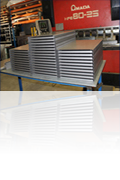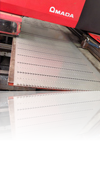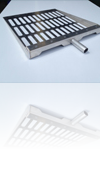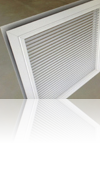Sheet metal fabrication is one of those revolutionary ideas in the history of mankind that have played a pivotal role in making modern life much more efficient and comfortable than ever before. Just try to imagine how our life would have been if there were no tools and machines as advanced as we have them now. The hard fact is that you can’t even imagine how long manufacturing companies would take to finish a product without the technology that we can utilize now. It would not be wrong to say that our desire to make our work less time consuming and complicated has led us to create useful and efficient sheet metal fabrication and aluminium welding technology.
Apart from the products that we use in our everyday lives, sheet metal fabrication holds a place of great importance in real estate industry. Home buyers are often advised to carefully consider the quality of sheet metal fabrication and aluminium welding work in the homes before they want to occupy them. There are a number of areas where sheet metal work is utilized in real estate properties. These areas include but are not limited to gutters, downspouts, windows and doors, ridges, chimneys and ventilation systems. Considering the importance of sheet metal fabrication and welding services, it makes sense to gain as much knowledge about these services as possible so as to take their advantage to the fullest.
Let’s start with sheet metal forming. Metal forming is an important component of sheet metal fabrication. Metal forming tooling, in turn, consists of two more components, namely the upper tool and the lower tool. Upper tool and lower tools are also known as punch and V-die respectively. These two tools are pressed against the metal in opposite directions to successfully form a bend in the process called metal bending. One of the advantages of advanced metal folding techniques is that you can obtain the same bend with many different combinations of V-die and punch nowadays. Generally, metals with excellent ductility are preferred to obtain a small bend radius in metal bending process.
Unlike metal bending, sheet metal stamping is somewhat more complex and consists of many procedures, such as drawing, piercing, and blanking. Metal stamping is done by using a stamping press. Though metal stamping can be easily performed on many types of materials, such as polystyrene, with sheet metal you can get outstanding results at very competitive prices. In sheet metal stamping, two of the most commonly used equipments are mechanical presses and hydraulic presses.
Another important process used in sheet metal fabrication is metal welding. Though not as complex as metal stamping and metal folding, it definitely requires much more precision and skill. Welding services are commonly utilized in metal finishing, dent repair and intricate sheet metal artwork. Exact welding procedures to be used are dependent on the nature and scale of the project.
Needless to say, all the processes involved in sheet metal fabrication require precision, creativity and patience to get desirable results. With the use of right tools, such as laser cutters, and quality material, manufacturing processes can become even easier and faster.
As the leading sheet metal fabrication company, at Micah & Co. we offer exceptional quality products and services created with a combination of cutting-edge equipments and unparalleled craftsmanship.




